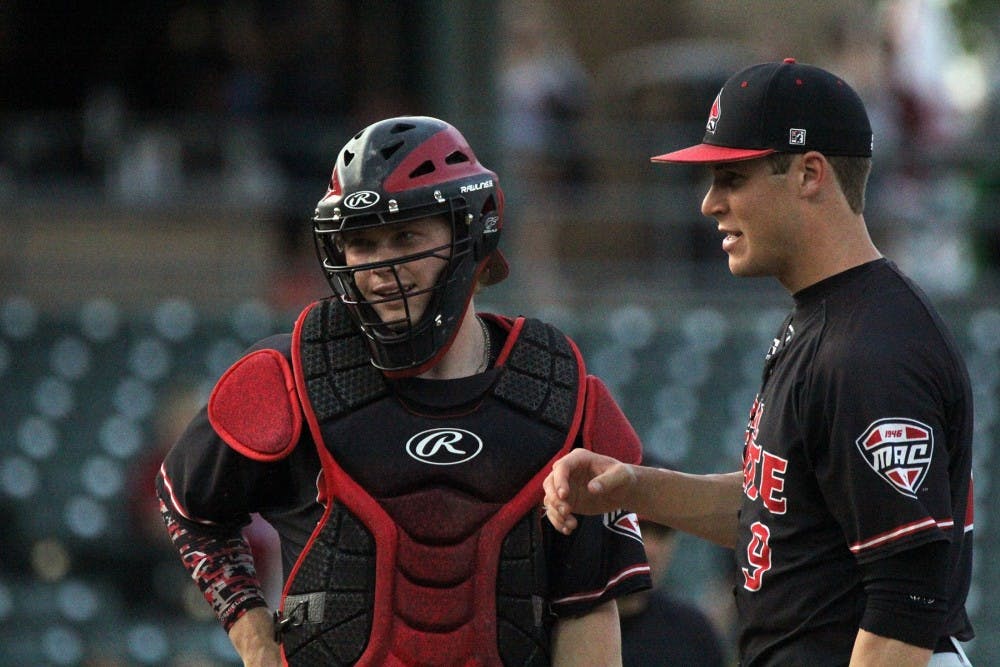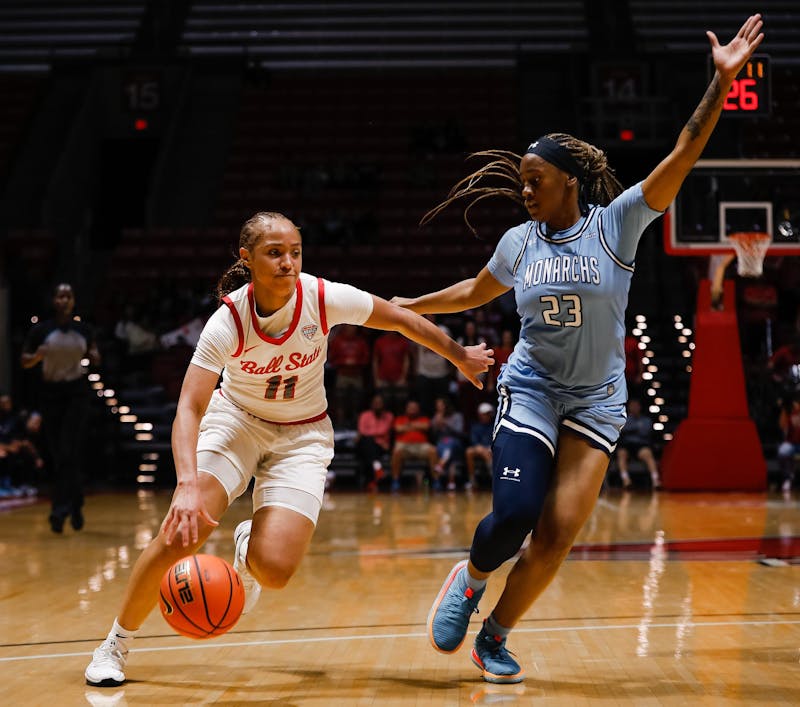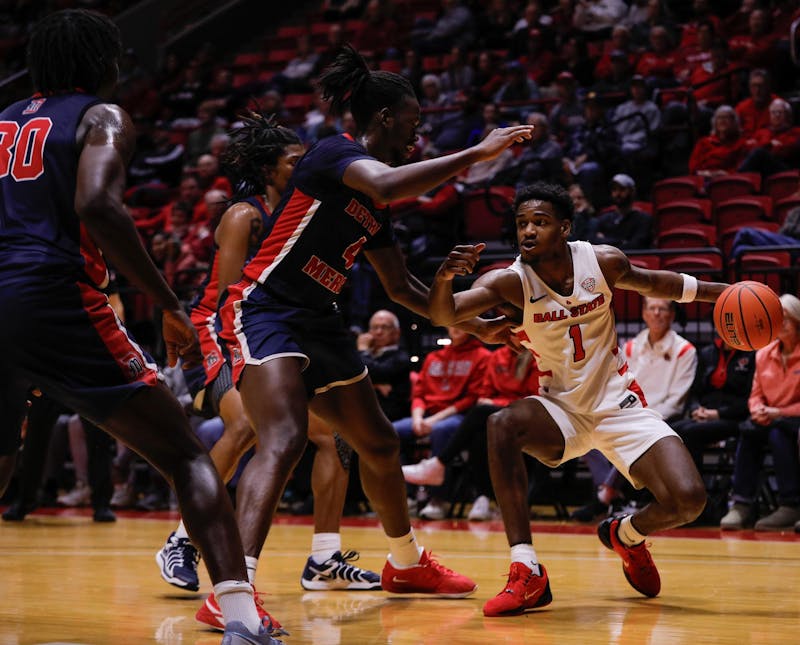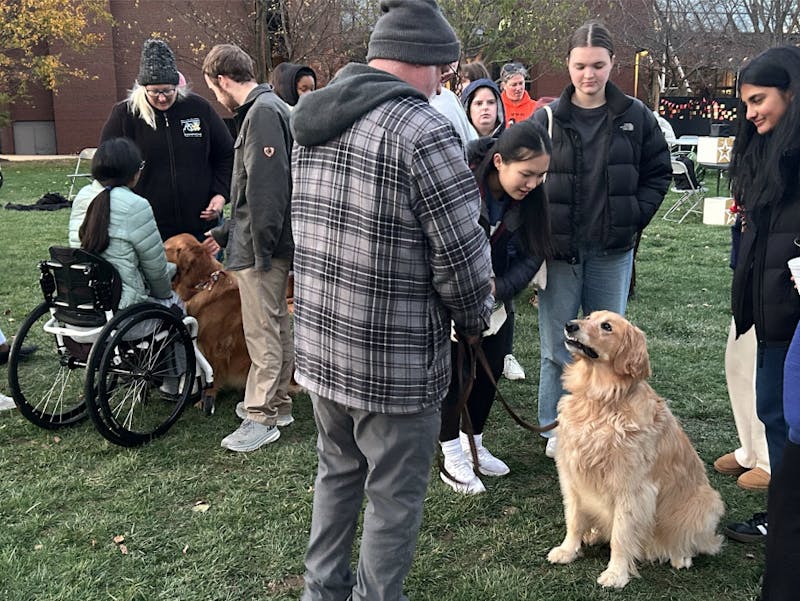Ball State junior Colin Brockhouse is just a flick of the wrist away from being a professional baseball player after he was selected by the Toronto Blue Jays in the Major League Baseball Amateur Draft Wednesday.
The question is whether or not the right-handed pitcher will sign.
Brockhouse slipped to the 24th round after being sidelined for most of March and April with tendinitis in the same arm that required Tommy John surgery his junior year at Northrop High School in Fort Wayne.
"I mean that screwed me in the draft a little bit," Brockhouse said. "I was projected to go [rounds] 4 through 10 — that's what I was hearing — but it didn't happen because teams were questioning the tendinitis issue a little bit and stuff like that, which kind of sucks, but I guess it is what it is."
There are pros and cons to both staying at Ball State and signing with Toronto, but either way it'll come down to the numbers on the contract.
How the MLB bonus pool system works
Whether junior right-handed pitcher Colin Brockhouse decides to stay at Ball State or join the Toronto Blue Jays is heavily influenced by the bonus pool system.
Each pick in the first 10 rounds of the draft is assigned a slot value, which are totaled to create each team's bonus pool. Toronto, for example, can spend up to $8,231,000 to sign their 2017 draft picks before penalties kick in, with their picks valued like so:
1st round: $2,795,200
1st round: $2,302,900
2nd round: $1,043,200
3rd round: $542,400
4th round: $405,100
5th round: $302,100
6th round: $233,900
7th round: $183,300
8th round: $152,100
9th round: $139,000
10th round: $131,800
The Blue Jays, however, only have to stay within their total pool and aren't bound by the individual slot values. In theory, they could offer their second-round pick a deal $500,000 over slot if they can get their other 10 draft picks to deals that are an average of $50,000 under slot.
If a player from the first 10 rounds decides against signing, then his full slot value is subtracted from the bonus pool. As a result, teams often target college seniors and sign them to below-slot deals.
"Nowadays they're taking kids who should be the 25-30 round draft pick who are taken in the top-10 rounds because they can sign them for lesser money," said Zach Plesac, Brockhouse's friend and former teammate. "You can't be discouraged on where you're drafted or how much money you're given."
But if he signs this year, Brockhouse falls under a different set of guidelines. Players taken in rounds 11-40 can receive up to $125,000 without it counting against the pool. He can try to negotiate a higher bonus, but anything over $125,000 is subtracted from the pool (ex. a $150,000 bonus would subtract $25,000).
Those rules form the basis of Brockhouse's negotiations with the Blue Jays. He can leverage his potential return the school for more money now, but Toronto can argue he won't increase his bonus significantly if he isn't drafted high enough next year.
"I would say one of the factors is the monetary value I receive [from the Blue Jays]," Brockhouse said. "You know, things didn't pan out how they were supposed to be in this draft, and I'm kind of frustrated about that. But then again, I'm still fortunate and still very thankful I get the opportunity again."
Shortly after being drafted, Brockhouse called his friend and former Ball State teammate Zach Plesac for advice.
Plesac was expected to go early in last year's draft, but his stock slid after undergoing Tommy John surgery in April 2016. The Cleveland Indians selected him in the 12th round, and he decided to sign the contract and go pro. He spent the last year rehabbing and was recently cleared to play short-season ball with the Mahoning Valley Scrappers of the New York-Penn League.
"He understands my situation last year when I took a loss because of my injury," Plesac said. "I dropped 10 rounds, I lost some money, but it is what it is."
The choice Brockhouse faces is unique to baseball. In the NFL and NBA, players forfeit their amateur status if they don't pull out before the beginning of the draft, but baseball players maintain their college eligibility as long as they don't sign a contract.
In fact, that's just what Brockhouse did last year when he was picked by the Pittsburgh Pirates in the 37th round. He returned to Ball State and posted a 3.98 ERA while striking out 40 batters in 40.2 innings, enough to move up 13 rounds in the draft even after the injury.
Still, even if he comes back to Ball State to his health in his senior season and climbs up the board, he won't have as much bargaining power as he does now.
"If I did go back to school, I could finish my degree," Brockhouse said. "But as a senior sign you get kind of, excuse the language, dicked out."
Brockhouse's blunt description could also sum up a 2014 Forbes article about college seniors and the MLB Draft's bonus pool system.
Starting in 2012, the bonus pool system limits how much teams can spend in the draft. Each pick in the first 10 rounds is assigned a slot value, and the sum of each team's pick is its pool. Penalties kick in if teams exceed their limits, but they aren't bound by the slot value for individual picks. As a result, teams started drafting college seniors who would sign deals below slot value in order to create flexibility to sign higher-profile picks.
According to Forbes, the average bonus of a college senior taken in the first 10 rounds was just 19.77 percent of his slot value.
Take Kendall Graveman, a right-handed pitcher now in the Oakland Athletics' starting rotation. A senior at Mississippi State in 2013, Graveman was picked No. 235 overall by Toronto in the 8th round and accepted a $5,000 bonus.
"You have to take what they give you because you have no choice," Plesac said. "You don't have any leverage, you choose to play professional baseball or you're done with baseball. There is no other direction you can go with it."
With teams focusing on signable players early in the draft, all but two players picked in the top 10 rounds of the 2016 draft decided to go pro.
Bargaining power is a concern for Brockhouse, but he said academics won't play a major role in his decision. He was named Academic All-Mid-American Conference with a 3.337 GPA in Exercise Science, but Plesac offers a template for continuing education in the minor leagues.
"I'm sure he'll get his school covered with the contract he was given," Plesac said. "I told him that too, that's what I had when I was drafted. [The Indians] opted to pay for the rest of my school. So when I was rehabbing in the fall, I finished the whole semester of school and then the spring finished the whole semester of school online. Now I have three classes until I graduate in December, so I'm going to graduate from Ball State."
Then again, college seniors are being selected earlier than they did before the pool system was implemented. This year, 78 college seniors were selected in the first 10 rounds and at least 63 have come off the board that early every year since 2012. In 2010 and 2011 combined, just 58 seniors were drafted in 2010 and 2011 combined.
The 2016 draft also showed that teams were willing to take MAC pitchers high in the draft, with Kent State's Eric Lauer going to the San Diego Padres in the first round (No. 25 overall) and Baltimore taking Western Michigan's Keegan Akin in the second (No. 54)
A pair of Ball State players were also taken in the first 10 rounds of the 2016 draft. Outfielder Alex Call didn't make it past the Chicago White Sox in the third round (No. 86) and catcher Jarett Rindfleisch went to the Miami Marlins in the ninth (No. 263).
While most seniors in that 2013 draft signed well below slot value, a handful still negotiated six-figure bonuses. Then-Virginia Tech outfielder Tyler Horan, for example, signed for $150,900 and was drafted by the San Francisco Giants in the 8th, 17 picks after Graveman.
Another year at Ball State could improve Brockhouse's draft stock enough to put him in line for a sizable bonus, but it also risks injury and a smaller bonus if he doesn't move up enough. Signing now would mitigate the risk, though in that case could also be leaving money on the table.
For now, Brockhouse is weighing his options.
"I haven't committed yet to the Blue Jays," Brockhouse said. "I think you get like a month, there's a 30-day opt-out."
Brockhouse has until the signing deadline on July 15 to make his decision. Either way, it'll come down to the numbers on the contract.
"I can wait out that period and if the Blue Jays can't come up with X amount or something, then I don't know," Brockhouse said. "I'll have to rethink things and make a decision from there."





The Daily News welcomes thoughtful discussion on all of our stories, but please keep comments civil and on-topic. Read our full guidelines here.